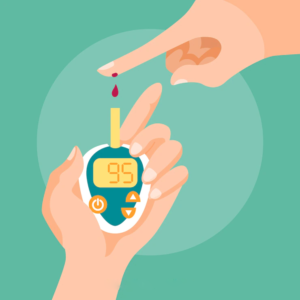Clinic Number
+91-9953396533Send us a Mail
aakashdawakhana1@gmail.comOur Location
Azadpur, DelhiWorking Hours
Mon - Sun 10:00 07:00
What is Diabetes
In the United States, the estimated number of people over 18 years of age with diagnosed and undiagnosed diabetes is 30.2 million. The figure represents between 27.9 and 32.7 percent of the population. Without ongoing, careful management, diabetes can lead to a buildup of sugars in the blood, which can increase the risk of dangerous complications, including stroke and heart disease.
Different kinds of diabetes can occur, and managing the condition depends on the type. Not all forms of diabetes stem from a person being overweight or leading an inactive lifestyle. In fact, some are present from childhood.
Types of Diabetes
Type I diabetes: – Also known as juvenile diabetes, this type occurs when the body fails to produce insulin. People with type I diabetes are insulin-dependent, which means they must take artificial insulin daily to stay alive.
Type 2 diabetes: – Type 2 diabetes affects the way the body uses insulin. While the body still makes insulin, unlike in type I, the cells in the body do not respond to it as effectively as they once did. This is the most common type of diabetes, according to the National Institute of Diabetes and Digestive and Kidney Diseases, and it has Strong links with obesity.
Gestational diabetes: – This type occurs in women during pregnancy when the body can become less sensitive to insulin. Gestational diabetes does not occur in all women and usually resolves after giving birth. Less common types of diabetes include monogenic diabetes and cystic fibrosis-related diabetes.
